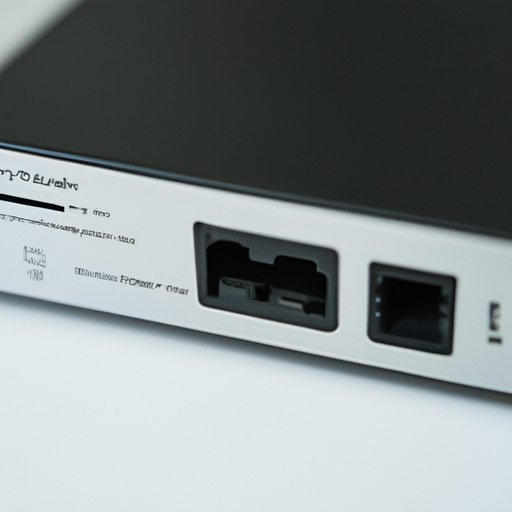
Introduction
Resetting your Mac means wiping all data, applications, and settings and returning it to the state it was in when you first bought it. It can be necessary to reset your Mac when it’s running slowly, experiencing performance issues, or facing software problems that other troubleshooting steps can’t solve. In this guide, we’ll provide you with step-by-step instructions on how to reset your Mac using a range of methods.
A Step-by-Step Guide
The first method we’ll explore is using the built-in functionality on your Mac. Here are the steps to follow:
- Click on the Apple menu in the top left corner of your screen.
- Click on “Restart” while holding down the Command+R keys.
- Continue holding the keys down until the Apple logo appears, and the “macOS Utilities” window opens.
- From the list of options, choose “Disk Utility” and then click “Continue.”
- Select the startup disk (usually called “Macintosh HD”) from the sidebar. Then click the “Erase” button.
- Type in a name for the disk and ensure the format is set to “Mac OS Extended (Journaled)”. Then click “Erase” again.
- Once the disk has been erased, close the Disk Utility window. Select “Reinstall macOS” from the macOS Utilities window.
- Follow the on-screen prompts to reinstall a fresh version of macOS.
Here is a visual guide to help you follow along:

Using the Built-in Utilities
The built-in utilities on your Mac provide you with quick and easy ways to reset your Mac. Here’s a more in-depth look at some of the different utilities:
Resetting SMC
If your Mac is experiencing issues with power, fans, ports, or other hardware, it could help to reset the System Management Controller (SMC). Here are the steps to follow:
- Shut down your Mac fully.
- Hold down the Shift+Control+Option keys and press the power button. Release all keys at once.
- Press the power button again to turn your Mac on.
Resetting PRAM/NVRAM
If you’re having problems with your Mac’s display or sound settings, you could try resetting the Parameter Random Access Memory (PRAM) and Non-Volatile Random Access Memory (NVRAM). Here are the steps to follow:
- Shut down your Mac fully.
- Press the power button to turn it on, then immediately press and hold the Command+Option+P+R keys.
- Continue holding the keys down until you hear the startup sound twice.
- Release the keys and let your Mac boot normally.
Resetting the Mac with a Bootable USB Drive
Another approach to resetting your Mac is by using a bootable USB drive. This is useful when you can’t access the built-in tools on your Mac or if you want to have the latest version of macOS available. Here’s how to create a bootable USB:
- Download the macOS installer from the App Store.
- Insert a USB drive and format it using the Disk Utility.
- Open Terminal and enter the following command: sudo /Applications/Install\ macOS\ Big\ Sur.app/Contents/Resources/createinstallmedia –volume /Volumes/Untitled
- Press Enter and then enter your administrator password.
- Wait for the process to complete, and then restart your Mac while holding down the Option key.
- Choose the USB drive from the boot menu.
- Follow the on-screen prompts to reset your Mac.
Troubleshooting Common Mac Resetting Problems
Sometimes, you may experience problems resetting your Mac. Here are some common issues and solutions:
SMC Reset Not Working
If your SMC reset isn’t working, try the following steps:
- Disconnect all peripherals (including power adapter).
- Shut down your Mac and wait for 10 seconds.
- Reconnect the power cable and restart your Mac.
Disk Utility Not Working
If Disk Utility isn’t working, you can try booting in Recovery Mode and entering the following command in Terminal: diskutil resetUserPermissions / username.
Using Third-Party Utilities
There are many third-party tools available for resetting your Mac. Here are some of the most popular:
Carbon Copy Cloner
Carbon Copy Cloner is an excellent tool for backing up and restoring your Mac. You can use it to create a bootable clone of your Mac and revert to that if necessary.
SuperDuper!
SuperDuper! is another cloning tool that allows for scheduled backups and supports incremental backups.
Resetting Your Mac as a Last Resort
Resetting your Mac should be a last resort after you’ve tried other troubleshooting steps. Before you reset your Mac, try booting in safe mode or using Disk Utility to repair the disk. You can also try reinstalling macOS from macOS Recovery mode.
Conclusion
Resetting your Mac is an essential troubleshooting step for any Mac user. Whether you use the built-in utilities, a bootable USB drive, or third-party tools, it’s essential to follow the right steps to reset your Mac properly. We’ve covered everything you need to know to reset your Mac in this comprehensive guide, from troubleshooting common problems to using third-party utilities.




